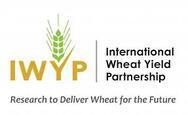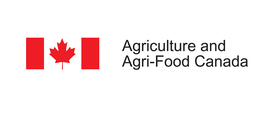AAFC IWYP Aligned:
Stomatal Signalling Pathways for Increasing Yield Potential in Wheat
Research collaboration between University of Essex and Agriculture and Agri-Food Canada.
Rationale: Cereals feed the world, representing roughly half of the global caloric intake. World grain stocks are the most basic measure of food security. Grain consumption is increasing annually, and end-use for biofuel production is also on the rise, meanwhile the available agricultural land cannot accommodate these growing needs. The increasing demand for grain worldwide necessitates higher production, and higher yield potential. It is anticipated that doubling of grain yields for food production alone will be necessary to meet population demands by the year 2050. Further impacts of climate change confound this challenge by threatening yield stability. Canada is one of the top five global exporters of wheat, which is the largest Canadian cash crop with an annual value exceeding $5 billion, but the impacts of heat and drought have been observed with increasing frequency on the Canadian Prairies, and has also been a serious problem for many wheat exporters around the world, including Australia and the United States. Stomata are attractive targets to improve wheat yield in our changing world. First, they are key determinants of photosynthesis that regulate carbon capture through CO2 uptake, and photosynthesis is a rate limiting step to improving yield potential. Second, stomata are key structural features in transpiration. This means they are major players in WUE, but also in maintaining optimal leaf temperatures through evaporative cooling. Maintenance of leaf temperature is critical for wheat, due to its temperature sensitivity during anthesis and grain filling. Additionally, the cooling effect of transpiration in maintaining canopy temperature has also been implicated in WUE. Stomatal conductance has been directly linked with wheat grain yield, due to both increased CO2 diffusion for photosynthesis and increased evaporative cooling. While often there is a trade-off between WUE and yield, optimizing stomatal patterning and increasing stomatal response to environmental cues can lead to improvements on both fronts. In this project, we will generate and screen genetic mutants in wheat with altered stomatal patterning (increased or decreased stomatal index) and altered stomatal behaviour for better yield potential, WUE and leaf/canopy temperature control. Gene-edited/TILLING lines showing the best yield potential in different field settings will be made available for rapid incorporation of non-GM mutants into wheat breeding programs in Canada, the UK and Australia. Phenotypic analyses from both greenhouse and field environments will be accompanied with molecular analyses to identify upstream/downstream elements of stomatal pathways to fine-tune our approach for higher yield potential and stability. Key alleles regulating stomatal pathways will be identified in wheat, a first important step in germplasm and marker development for improve yields through optimized respiration, carbon assimilation and transpiration.
Rationale: Cereals feed the world, representing roughly half of the global caloric intake. World grain stocks are the most basic measure of food security. Grain consumption is increasing annually, and end-use for biofuel production is also on the rise, meanwhile the available agricultural land cannot accommodate these growing needs. The increasing demand for grain worldwide necessitates higher production, and higher yield potential. It is anticipated that doubling of grain yields for food production alone will be necessary to meet population demands by the year 2050. Further impacts of climate change confound this challenge by threatening yield stability. Canada is one of the top five global exporters of wheat, which is the largest Canadian cash crop with an annual value exceeding $5 billion, but the impacts of heat and drought have been observed with increasing frequency on the Canadian Prairies, and has also been a serious problem for many wheat exporters around the world, including Australia and the United States. Stomata are attractive targets to improve wheat yield in our changing world. First, they are key determinants of photosynthesis that regulate carbon capture through CO2 uptake, and photosynthesis is a rate limiting step to improving yield potential. Second, stomata are key structural features in transpiration. This means they are major players in WUE, but also in maintaining optimal leaf temperatures through evaporative cooling. Maintenance of leaf temperature is critical for wheat, due to its temperature sensitivity during anthesis and grain filling. Additionally, the cooling effect of transpiration in maintaining canopy temperature has also been implicated in WUE. Stomatal conductance has been directly linked with wheat grain yield, due to both increased CO2 diffusion for photosynthesis and increased evaporative cooling. While often there is a trade-off between WUE and yield, optimizing stomatal patterning and increasing stomatal response to environmental cues can lead to improvements on both fronts. In this project, we will generate and screen genetic mutants in wheat with altered stomatal patterning (increased or decreased stomatal index) and altered stomatal behaviour for better yield potential, WUE and leaf/canopy temperature control. Gene-edited/TILLING lines showing the best yield potential in different field settings will be made available for rapid incorporation of non-GM mutants into wheat breeding programs in Canada, the UK and Australia. Phenotypic analyses from both greenhouse and field environments will be accompanied with molecular analyses to identify upstream/downstream elements of stomatal pathways to fine-tune our approach for higher yield potential and stability. Key alleles regulating stomatal pathways will be identified in wheat, a first important step in germplasm and marker development for improve yields through optimized respiration, carbon assimilation and transpiration.
Meet the team
University of Essex

Project Lead Essex:
Professor Tracy Lawson Professor of Plant Physiologist University of Essex. [email protected] |

|



